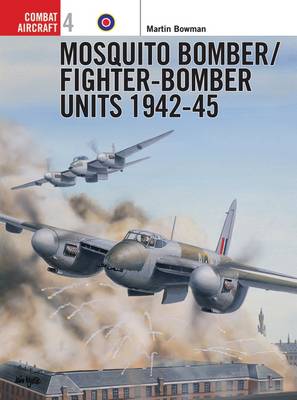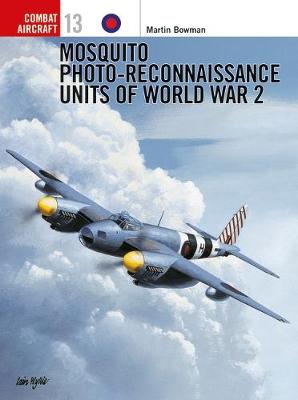Osprey Air Combat S.
2 primary works
Book 4
Truly an example of engineering ingenuity born out of the desperation of war, the legendary 'all-wooden' Mosquito was perhaps the best twin-engined fighter-bomber of its size to see action in World War 2. The first bomber variant to enter service was the B Mk IV, initial examples of which were issued to No 2 Group's No 105 Sqn at Swanton Morley, in Norfolk, in November 1941. Considerably faster than the unit's previous Blenheim Mk IVs, powered by inline rather than radial engines, and made of wood instead of metal alloy, the Mosquito initially proved a challenging mount for both air- and groundcrew alike.
Book 13
The third volume in the trilogy of Combat Aircraft titles devoted to de Havilland's 'wooden wonder', this book focuses on the Mosquito photo-recce variants of World War II (1939-1945) as well as their users. The design's superb performance, and ability to escape interception by enemy fighters made the Mosquito the ideal choice for the RAF's then embryonic photographic reconnaissance force. The production standard PR1 subsequently became the first Mosquito variant of any kind to see operational service with the RAF, flying its first sortie [over France] on 20 September 1941. These aircraft flew all manner of bomber support missions ranging from simple post-raid photo-recce to weather checking and experimental H2X radar photo-mapping. All are detailed in this volume.

